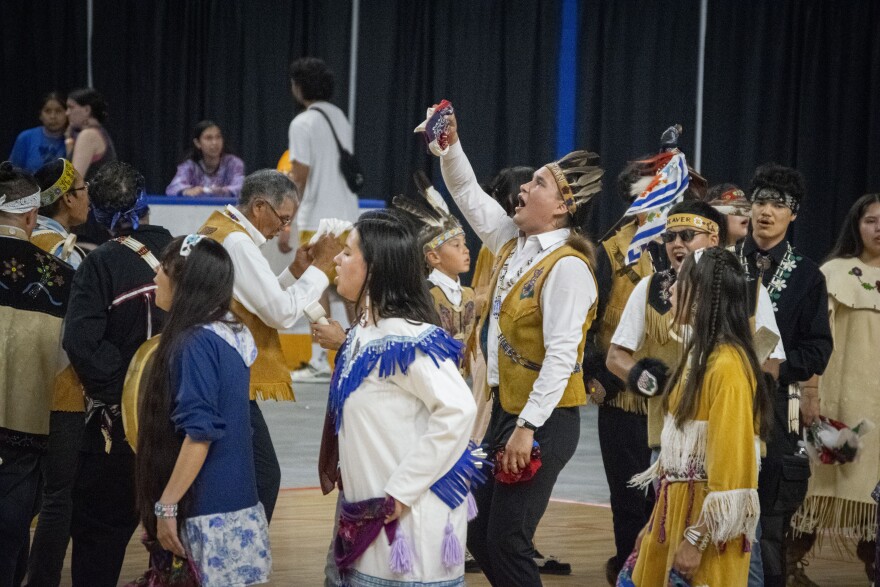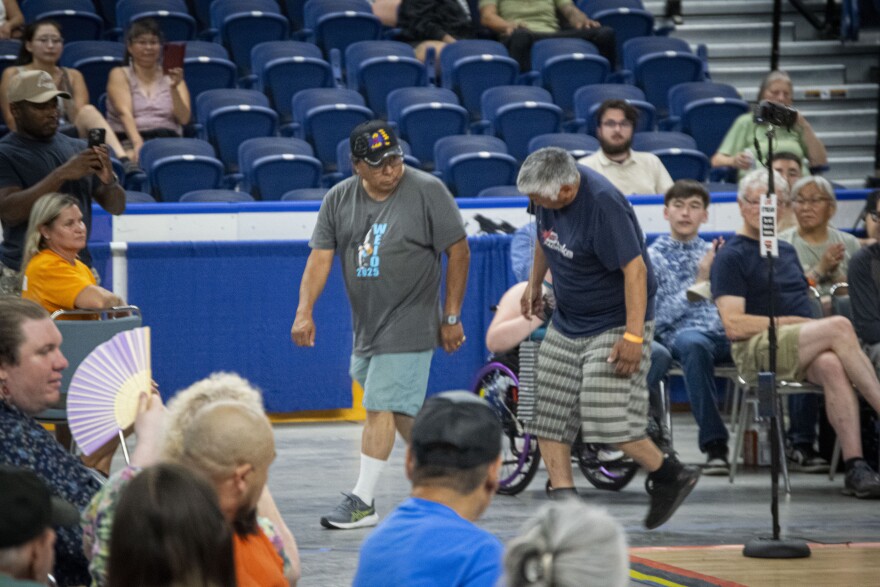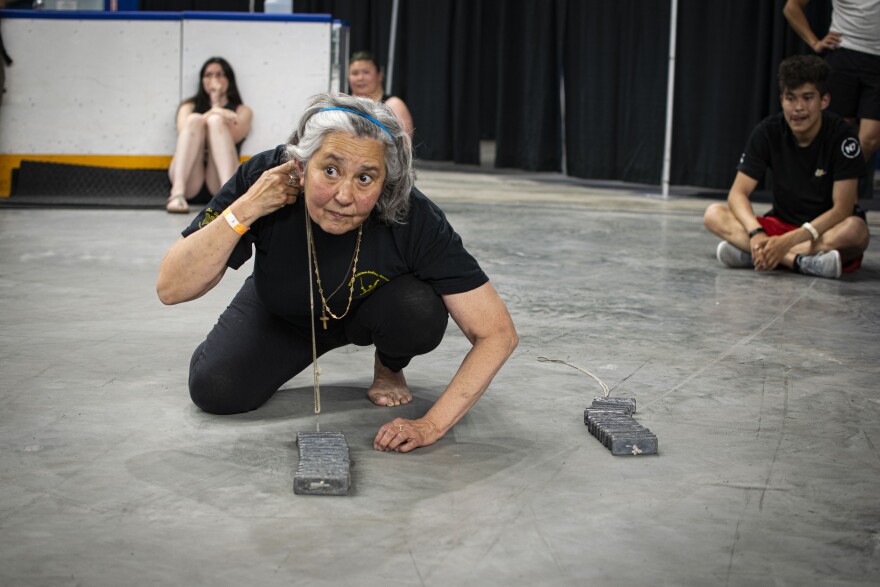People from all over North America came to compete in the World Eskimo-Indian Olympics in Fairbanks last week. Every year, the event showcases traditional sports and skills that have helped Indigenous people survive in the Arctic for generations.
Inside the Carlson Center, the event was a feast for the senses. On one side of the stadium, singers, dancers and drummers intermittently poured out onto the floor and filled the air with song. On the other, vendors sold crafts laid out on brightly-colored booths — fox furs, baleen, kuspuks and so many earrings.

The big draw, though, are the sports, which test traditional and practical skills — from the Alaskan high kick to a fish-cutting competition. One stood out: the ear weight challenge, where participants carry metal weights tied to one ear.
62-year-old Frank Lane of Kotzebue is the event's perpetual champion. In the final hours of the competition, he meandered in a circle about half the size of a basketball court. His head was lowered, dragged down by 16 pounds of metal tied to one ear. The audience didn't lose steam cheering for him, even after his third or fourth lap.
After his seventh, exhausted, he slapped his knees and calmly removed the weight. He'd claimed another victory over dozens of young people in peak physical condition, many of whom failed to lift the weights at all.

13-year-old Jazmine Van Blarcom of Wasilla was waiting among a group of other rookies who were trying to qualify for the final competition. She said there's no way to avoid the pain, which is intense. But there are tricks to mitigate it.
"There's a lot of people that have different strategies that win and go super far in this event," she said. "I think a better strategy is probably just hooking it straight on and not moving your head around while you're doing it."
Jazmine tried to beat her older sister Daisy's personal best of four weights but didn't quite get there.
Beads of sweat formed on competitors' heads as the twine dug into their fragile cartilage. It was easy to tell who had already gone — they were standing off to the side, rubbing an ear that had turned an angry shade of red or purple.
World Eskimo-Indian Olympics organizers say the event is designed to prepare people for the sensation of frostbite. Elizabeth Akhivgak of Utqiagvik said it's also about pain in the abstract.
"In most recent memory, I can think of historical trauma within our communities that are experienced by all people of all ages," she said. "It's a practice so that we can be a resilient people, a healthy people."
Akhivgak came to the event to host a booth for Native People's Action, a subsistence rights advocacy group. She wasn't planning to participate, but she signed up at the last minute.
Right before her turn came up, she whispered that she was a little nervous about the possibility of not qualifying. Unlike the other participants, who came dressed for the gym, she stepped up to the weights in a white floral dress.

When she started to stand and the twine around her ear pulled taut, she struggled to "get the right angle" to lift the weights completely off the ground. The first segment clattered to the floor, and other participants praised her attempt.
Akhivgak didn't qualify for the real competition, but she's glad she tried. She said she spent those long, painful moments in silent prayer.
"I know this probably sounds cheesy, but I was asking for my ancestors' guidance," she said. "I've never participated in these games, so I feel fulfilled that way."
Many other young rookies struggled, too, but some elders made it look like a walk in the park. Champion Frank Lane said he only stopped walking because he got winded.
"I have asthma," he said, breathlessly. "So, I think, pacing myself in breathing — that's my issue. The weight is not a problem."
Lane said it's important to pass on the practice to future generations because even though times have changed, life will always call for grit.
Copyright 2025 KUAC


